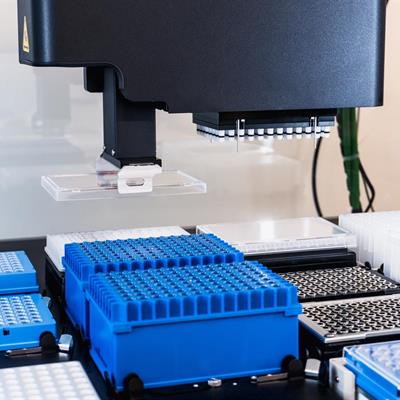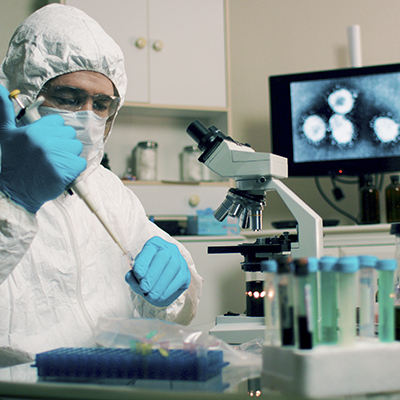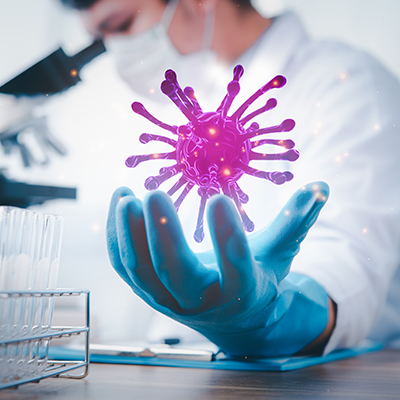February 26, 2021 -- One of the most important factors in fighting the COVID-19 pandemic is large-scale scientific collaborations and knowledge sharing. One international group of researchers has made its simple, robust toolkit available to laboratories around the globe that are unaccustomed to working with coronaviruses. The details can be found in a PLOS Biology paper published on February 25.
Identification and characterization of SARS-CoV-2 vaccines and drug candidates requires extensive in vitro and in vivo study of the virus. During the global pandemic, many laboratories have shifted focus toward SARS-CoV-2 research but are inexperienced at working with infectious diseases and in particular coronaviruses. This has created a major unmet need for new scientific tools.
Due to the complex nature of the large RNA genome of SARS-CoV-2, replication and transcription of the genome is difficult to achieve with currently available tools that rely on end-ligation cloning strategies requiring in vitro transcription and expression systems. This can be an especially daunting task for researchers whose expertise lies in other fields.
In the current paper, an international consortium that includes researchers from Australia, Scotland, and Estonia detailed a user-friendly reverse-genetics plasmid system that can be used to study SARS-CoV-2. The plasmid reverse transcription system uses publicly available sequences, in the form of full-length complementary DNA that can be inserted into a single-copy plasmid backbone. This synthetic modified virus can be stably amplified and eliminates the need for error-prone in vitro transcription and assembly of multiple DNA fragments. Transfection of a single plasmid into mammalian cells can then be performed to study infectivity of the virus.
The authors noted that SARS-CoV-2 constructs are highly amenable to genetic manipulation and can be used to study emerging variants of the virus.
The researchers also detailed the production of a panel of sheep polyclonal antibodies against the structural, nonstructural, and accessory proteins of SARS-CoV-2, along with a smaller panel of antibodies targeting key SARS-CoV, MERS-CoV, and seasonal human coronavirus (OC43 and 229E) antigens. To generate the antibodies, the researchers inoculated sheep, and antibodies were recovered from immunoglobulin G isolated from blood samples.
These antibodies can be used in a variety of functional assays, including western blotting, immunofluorescence, and co-immunoprecipitation assays. The team validated the antibodies using Vero E6 cells infected with SARS-CoV-2 to determine the abundance and location of SARS-CoV-2 proteins at different stages of viral replication.
The researchers also engineered epithelial cell lines that were susceptible to SARS-CoV-2 infection and that could be easily adapted for many assay applications. They generated angiotensin-converting enzyme 2 (ACE2) and transmembrane protease, serine 2 (TMPRSS2)-expressing cell lines, as well as double-expressing ACE2-TMPRSS2 lines using lentiviral vectors.
The authors noted that the cell lines are suitable for cytopathic effect-based assays, which are useful for screening compounds and compound characterization in medium-throughput screening. The cytopathic effect-based assay can also be multiplexed to monitor compound-toxicity in parallel.
Furthermore, the team described how clinical isolates can be used to monitor phenotypic variation over time. They validated clinical samples using the antibody panel they developed.
The data show that the study of SARS-CoV-2 is variable and difficult to achieve due to lab-to-lab variation and inherent differences in working materials such as viral strain, cell culture conditions, and passaging protocol (subculture for expansion). Given the tedious nature of working with SARS-CoV-2, the robust, high-fidelity tools that the researchers described can help laboratories generate uniform SARS-CoV-2 virus for a number of applications.
Following the generation and validation of the toolkit materials, all cell lines and virus strains have been deposited at the U.K. National Institute for Biological Standards and Control and all antibodies, proteins, complementary DNAs (cDNAs), cell lines, and reverse genetics constructs were made available online through a nonprofit web interface.
"By making this toolkit available to the global research community, these resources will fast-track investigation of many aspects of COVID-19 research, including novel variants of concern, drug discovery and vaccine development," the authors concluded.
Do you have a unique perspective on your research related to virology? Contact the editor today to learn more.
Copyright © 2021 scienceboard.net









